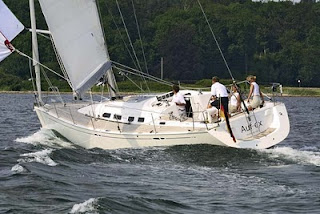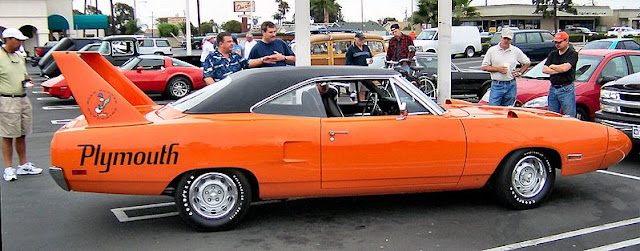
I was excited to see the South Africa–built Moxie 37 Island Hopper maneuvering into position before the Annapolis Boat Show opened last fall. It was unlike any other medium-size (under 40 feet) cruising cat at the show, and it was the first Moxie to appear in the U.S. I jumped aboard as soon as they tied up to the dock. It has a recessed working area at the base of the mast that’s reminiscent of the design of the Gunboats, another line of cats from South Africa. The Moxie is, however, an entirely different animal (and company). I took it out for a spin on Chesapeake Bay after the show. Here’s what grabbed me.
Under sail
Unfortunately, we had a fluky 6-to-8-knot breeze and flat water for our test. Still, that was enough to get the lightweight Moxie moving. Flying the large-roached, square-topped full-batten main and large screecher, we had boatspeed hovering up to close to the windspeed — faster than any other boats that were sailing that afternoon. Steering and trimming from the helm station at the base of the mast was, well, different. It was easy to forget that most of the boat was behind me, But overall visibility was excellent, it was easy to see the telltales on the headsails, and trimming the mainsail required only a look up. I liked feeling a little closer to the action from the wheel, while most cruising cats have the helm station perched high enough to see over the coachroof. The steering system was responsive and the Moxie was fun to sail, even in the light wind, but I’d really like to see what it can do in a breeze. Moxie’s designer, Uwe Jaspersen, reports that speeds in the high teens are the Moxie’s happy place. Sign me up.

Under power
The dual 11-horsepower inboard diesels provided plenty of power to push this light cat along. We were humming along at an easy 7 to 8 knots at cruising speed and could punch up to 10 at full throttle. Maneuverability was excellent with two props in the water. Hatches at the sterns provide easy engine access, and the saildrives and folding props keep drag to a minimum under sail.
On deck
With all the lines (including the daggerboard controls) leading to the deep, secure helm station (pit) at the base of the rotating mast, there’s really no reason to go forward other than to drop/retrieve the anchor or to lounge on the trampoline. The helm station is directly behind the mast and is easily accessed through a door leading back to the cockpit-cum-bridgedeck. The terminology has me scratching my head a bit simply because there really isn’t another deck layout like this available anywhere. Other open-bridgedeck designs have more-conventional helm stations. And the Gunboats have working areas at the base of the mast, with the helm station protected inside a fully integrated bridgedeck saloon. The Moxie’s bridgedeck area has a long settee (think about sleeping under the stars) and plenty of room to move around. Its rigid roof is curved to maximize sun protection, but requires stooping when entering from the side. Other cool deck features include easily retractable rudders and daggerboards and excellent visibility forward (and ventilation) from the bridgedeck.

Accommodations
As with all open-bridgedeck boats, the Moxie’s accommodations — cabins, heads, galley — are in the hulls. Despite the boat’s limited interior volume (as compared with larger cats that have enclosed bridgedeck saloons), the layout avoids the feeling of cabins, heads, and galley being shoehorned into long, thin, dark spaces. The main cabins (one in each hull) have large double bunks and decent stowage; good light and ventilation from generous headroom and large opening deck hatches give the feeling of space. Each hull has a decent-sized (not huge) head. The galley, which faces aft in the starboard hull, is big enough to do what you need a galley to do (cook and store food), and hull ports and deck hatches provide excellent visibility. A guest cabin in the starboard hull, which also houses a chair and tabletop, can be used as an office-plus-nav station. In all, it amounts to livable accommodations on a smallish cruising cat with serious speed potential.

Conclusion
The Moxie 37 is a refreshing approach to sub-40-foot cruising catamarans. It’s big enough to cruise offshore, yet small enough to be light and manageable. The accommodations are livable, it’s fast enough to please any speed demon, and its open (but well covered) bridgedeck area is perfectly suited to warm-water cruising grounds. The Island Hopper moniker seems perfect.
Construction
The hulls are built of vacuum-laminated E-glass/epoxy with PVC foam core and carbon reinforcements in the high-load areas. The layup schedule is a three-step process. The hulls are vacuum-bagged under full atmospheric pressure after each layup. This helps ensure that both excess resin and air pockets in the structure are eliminated so that no gaps form where water can accumulate. The rotating wing mast, the Park Avenue boom, and the hard cockpit roof are also built of carbon and epoxy.




how well would it do cruising in NE? It seems like a great design, but not that warm. I’d like to see something that had a more rugged cabin.